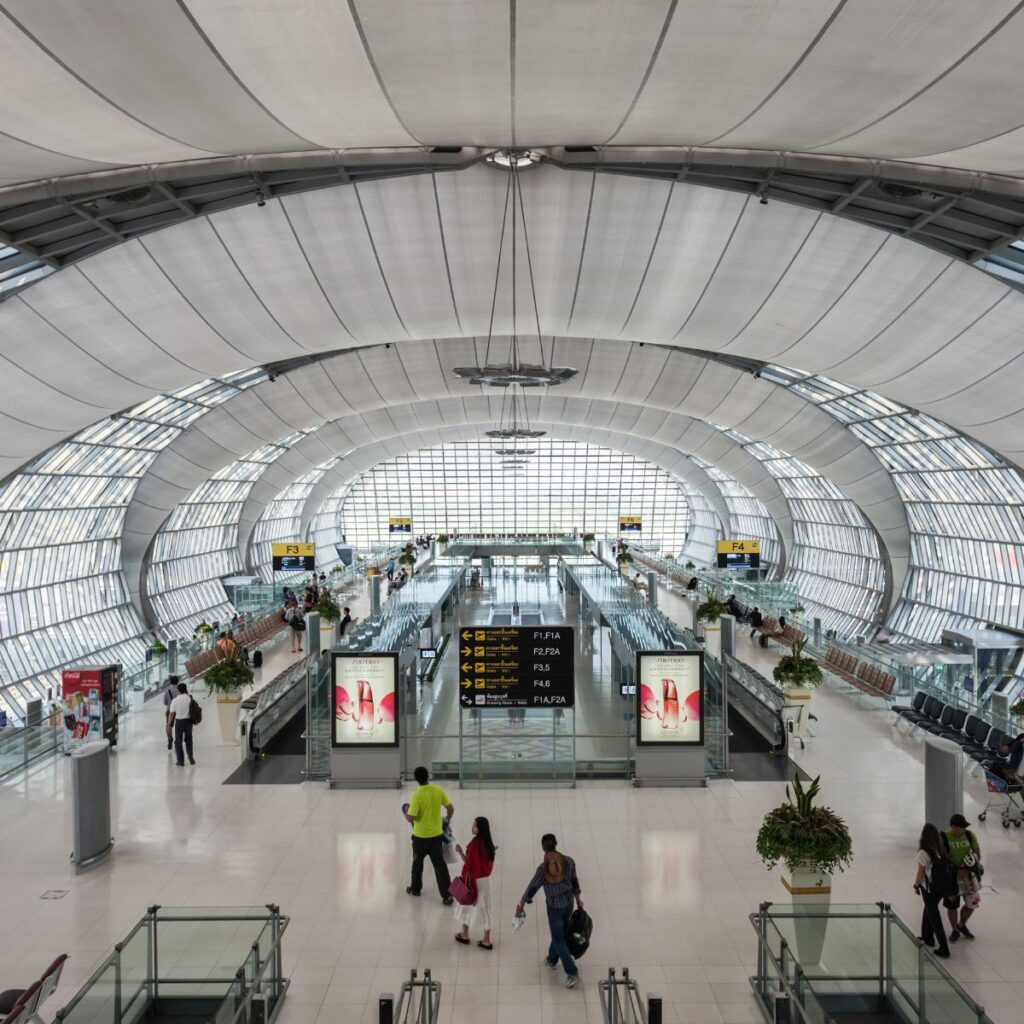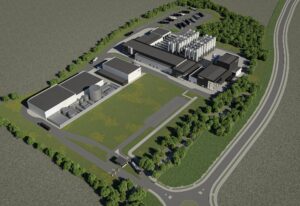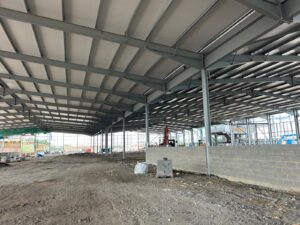Designing effective drainage for airports presents unique challenges.
With vast roof areas and complex building designs, traditional gravity-based systems often fall short. In this context, siphonic drainage systems emerge as not only the best option but sometimes the only viable solution.
Drawing from our experience in designing the rainwater drainage systems for airports in Europe and Asia, let’s explore why a siphonic or hybrid siphonic-gravity approach is essential for management of the follow of rainwater in these large, complex structures.
The challenge of airport roof drainage
Airports are large and complex structures, with enormous roof areas collecting very large volumes of rainwater. A highly efficient drainage system is paramount and ensures large volumes of rainwater can be drained within seconds. Within the structure itself space is constrained and architectural design often limits the placement of downpipes.
Traditional gravity drainage systems rely on a traditional drainage outlet where the water naturally creates a vortex and air takes up 66% of the available area in the pipe. To achieve water flow the pipework must be sloped to move the water quickly through the pipe. The space required to facilitate the sloping of long runs of gravity pipework becomes highly problematic when dealing with massive, flat roof areas.
Siphonic drainage systems, on the other hand, use a special outlet that induces a full-bore flow of water, creating a gravity induced vacuum effect that essentially sucks the water through the outlet and rapidly drains water from the roof. The vacuum action means that drainage pipes can run horizontally at zero gradient, without the slope required for gravity drainage. As there is no need for air within the pipework siphonic pipework is typically half the size of traditional gravity pipework. This space saving feature is crucial for airport buildings, where space constraints and architectural design mean that location for downpipes are limited.
Siphonic systems also provide the building with far greater protection against extreme weather events as they can drain the water from the roof far quicker than a traditional gravity system. This is critical on an airport building to ensure building is adequately protected against extreme weather events.
Case Study 1
Space constraints in a regional Irish Airport
In smaller airports, like one that Capcon recently designed in the south of Ireland, the primary challenge lies in concealing downpipes and efficiently routing pipework to strategic underground drainage locations. Space is often limited in airports and architectural designs prioritise passenger flow and aesthetics and visible drainage infrastructure is not appreciated.
Siphonic drainage systems are ideal in these scenarios as they are flexible, and allow for strategic pipe routing. Multiple outlets on a single roof can be combined to efficiently channel water to fewer downpipe locations, minimising civil drainage requirements also. Fewer downpipes are easier to conceal within the building’s structure.
Case Study 2
Managing Large Roof Areas in Airport in Poland
The situation becomes even more complex in larger airports, which often feature long, continuous roof spans with limited opportunities to install downpipes without disrupting the building’s design or operational efficiency.
The Polish airport in question had roofs exceeding 200 metres in length, accompanied by multiple fixed piers, and concourses. Finding appropriate locations for the numerous drain pipes required to facilitate traditional gravity drainage was simply not feasible on a project of this scale.
Here, siphonic drainage proved indispensable, allowing for the collection of rainwater from multiple large roof sections, which combined into a small number of strategically located downpipes. These were then routed back to the main terminal building or to designated columns, preserving the building’s aesthetic integrity while ensuring a highly efficient drainage system. Additionally, the solution facilitated rainwater harvesting, meeting the sustainability goals outlined for the project. The design allowed for a full primary and overflow siphonic systems throughout to ensure the Airport was protected against even the most extreme weather events.
Case Study 3
Overcoming high rainfall intensity in international airport in Asia
In this case, the region’s tropical climate, characterised by extremely high rainfall intensities, was a critical consideration in choice of rainwater management systems. Traditional gravity drainage systems would struggle with these parameters, both in terms of capacity and the ability to integrate with this airport’s design, which featured extensive glazing and a striking architectural design.
- It could handle the large volumes of water generated by heavy rainfall
- It allowed for the concealment of pipes in alignment with the building’s aesthetic requirements
- It allowed for the strategic routing of internal rainwater pipework to avoid any critical areas
The flexibility of siphonic drainage enabled downpipes to be strategically positioned to complement the building’s framework. Moreover, the siphonic’s capacity for long horizontal runs, without the need for sloped pipes, was crucial in optimising space at the ground and basement levels where the drainage system needed to connect to municipal lines within tight spatial constraints. This was all achieved while utilising a dual piped primary and overflow siphonic systems to ensure maximum protection for the airport.
Why siphonic drainage is often the only choice for airports
- Much greater flexibility in pipe routing with long runs possible at zero gradient
- Fewer downpipes and easier concealment of drainage infrastructure
- Rapid drainage management of large volumes of water
- Greater protection against extreme weather events
By rapidly draining water from roofs and enabling long, horizontal runs without falls, siphonic drainage maximises the use of available space and ensures the system’s performance even during peak rainfall events. This is particularly crucial in airports, where any failure in the drainage system could lead to significant operational disruptions.
In summary, when designing rainwater drainage systems for airports, siphonic drainage is very often the only real choice. Its ability to manage large roof areas, integrate with complex architectural designs, and operate efficiently under high rainfall intensities makes it indispensable in ensuring that these critical infrastructures remain functional and safe, regardless of the weather conditions.







